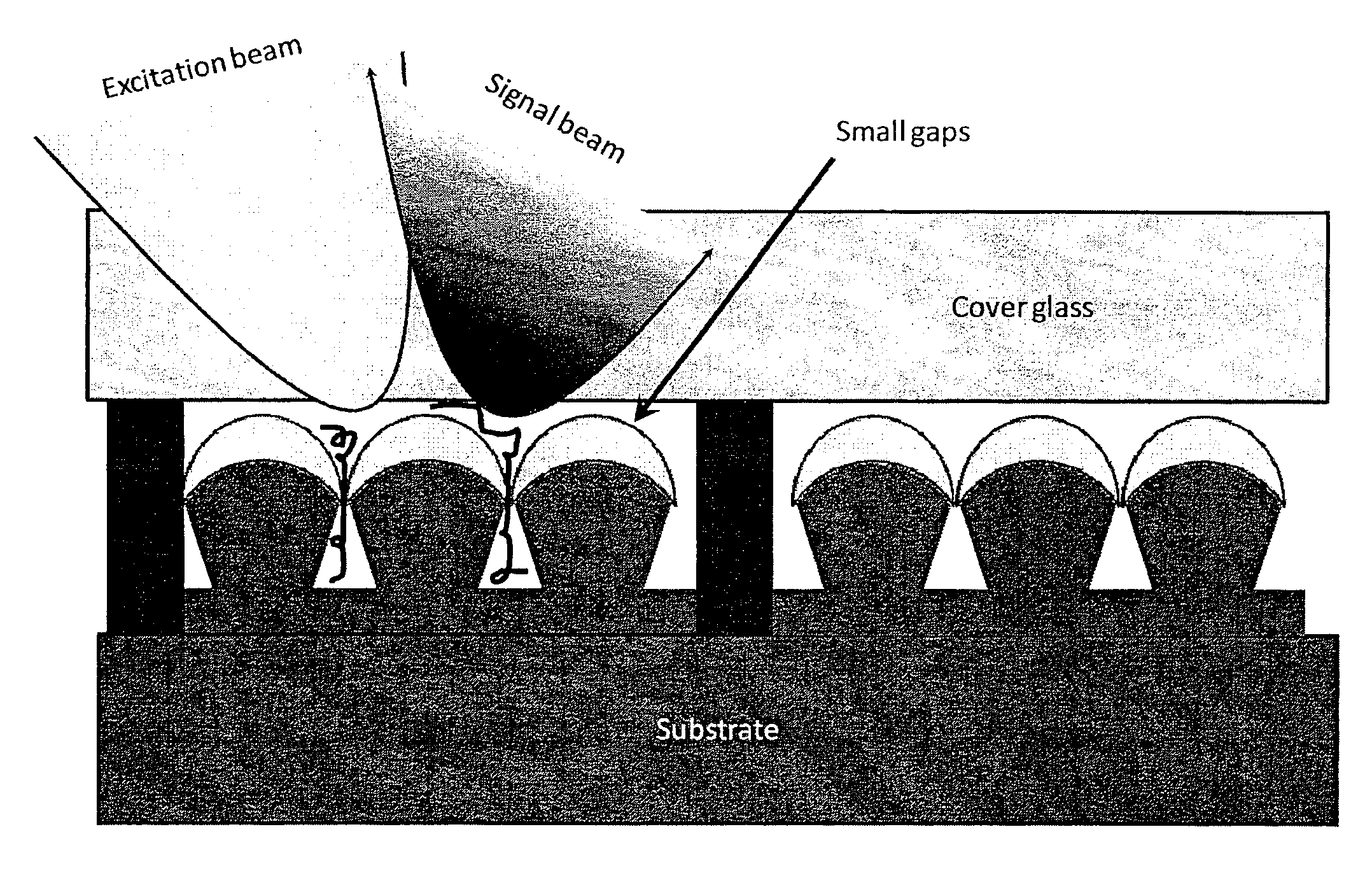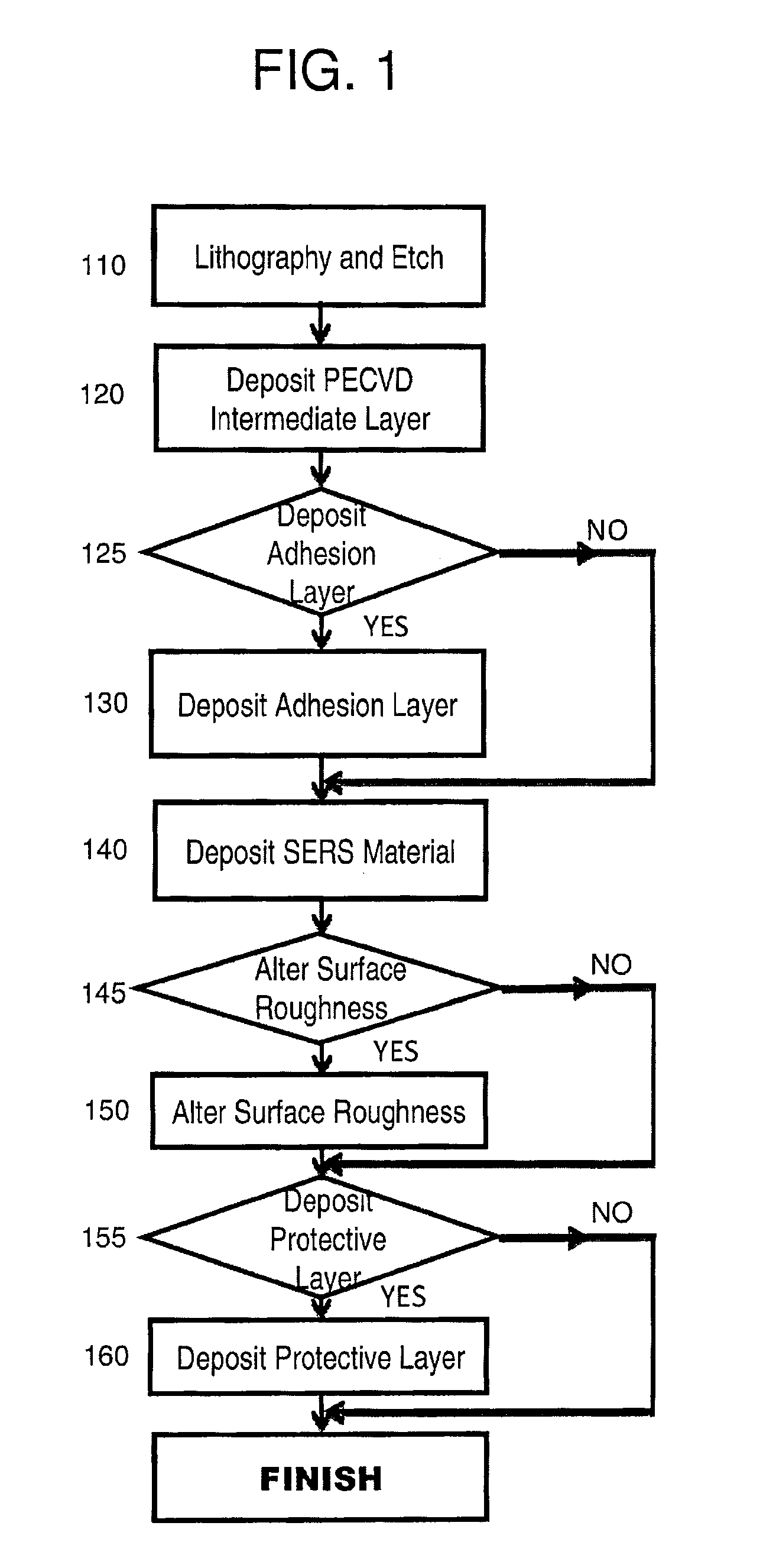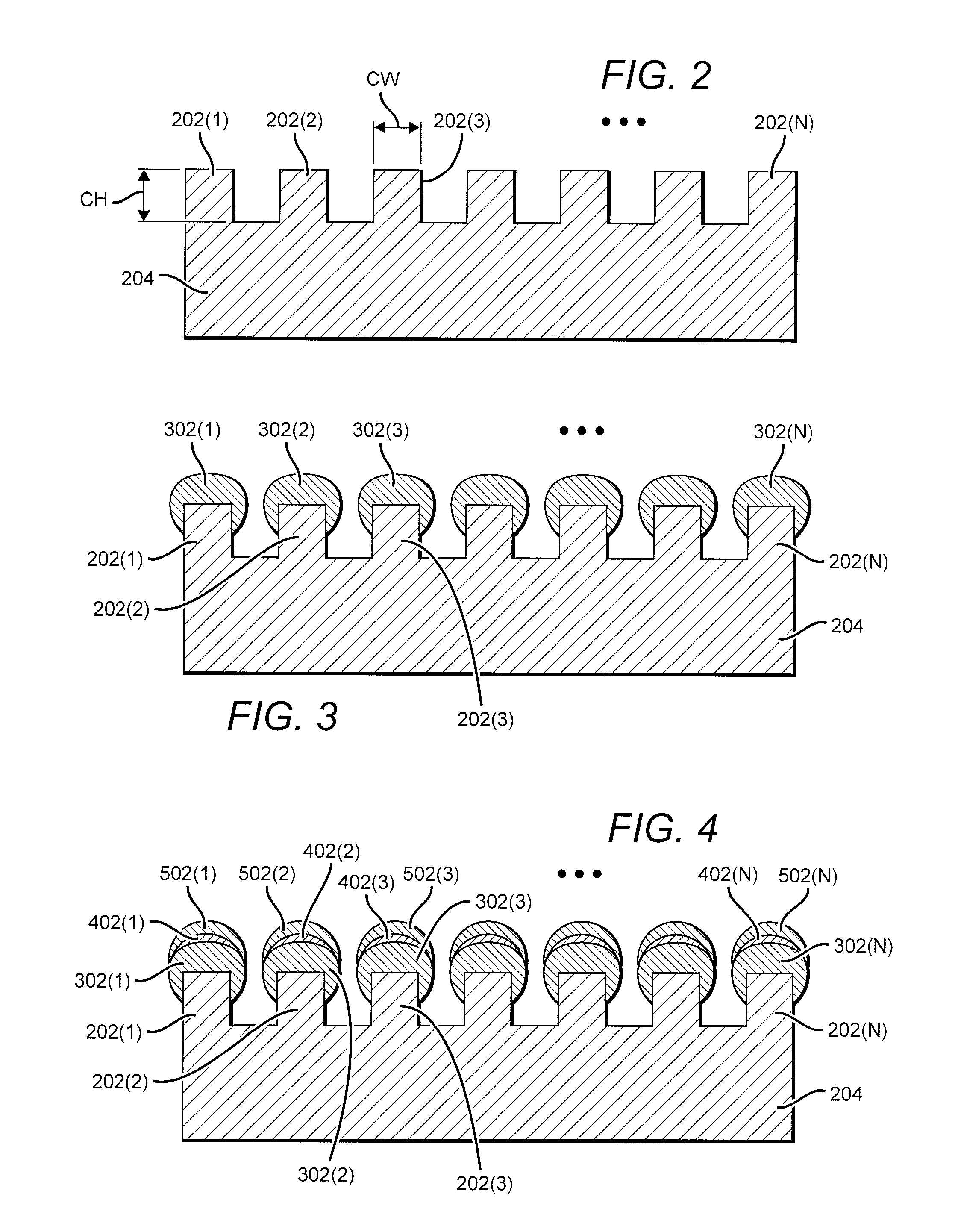Highly Efficient Plamonic Devices, Molecule Detection Systems, and Methods of Making the Same
a technology of plasmonic devices and detection systems, applied in the field of plasmonics, can solve the problems of not being suitable for commercialization and efficient manufacturability, not being able to achieve the effect of efficient manufacturing, and being too weak to be used, etc., and achieves the effect of enhancing the functionality of the device, reducing the incidence of plasmonic radiation, and altering the surface roughness of the active material of the sers
- Summary
- Abstract
- Description
- Claims
- Application Information
AI Technical Summary
Benefits of technology
Problems solved by technology
Method used
Image
Examples
example # 1
EXAMPLE #1
[0106]One use and embodiment of the inventive subject matter discussed above relates to the use of plasmonic substrates in a SERS process for airborne analyte detection. This example relates to the development of nanograting array-based SERS substrate into a device that can detect an analyte present in the air or when the substrate comes into direct contact with an analyte. Analytes in air, can have very low concentrations e.g. few molecules or hundreds of molecules or ppm, ppb, or ppt. These molecules can be blown across or attracted to the substrate and adsorbed or attached to allow for measurement.
[0107]The embodiment can use substrates that are reliable and reproducible substrates such as the plasmonic substrates described above. The substrates can collect the analyte molecules from the air and can also include a concentration mechanism for enhanced low concentration detection. For example, the substrate can be coated with a material to which the desired analyte has a ...
example # 2
EXAMPLE #2
[0121]In a second example, the SERS substrates described above can be used in a controlled-substance detection system. The device can be used to test for many controlled substances. This example integrates the nanograting array-based SERS substrate into a device that can detect controlled substances in low concentrations. The SERS substrate can be used in conjunction with a handheld unit for roadside drug detection applications, such as for the enforcement of driving under the influence laws, or in a desktop unit such as in a laboratory, hospital or forensic laboratory setting.
[0122]The substrates provide reliable and reproducible substrates for surface enhanced Raman spectroscopy with consistent and large enhancement factors. As described above, the SERS substrates are stable to sample swab transfers, can be used dry or in a moisture rich environment. The substrates can be operated under static or flow conditions. The substrates can be used with or without nanoparticles b...
example # 3
EXAMPLE #3
[0148]A third example use for the plasmonic structure described above concerns it's use for DNA sequencing. One method for performing DNA analysis is described in an article by R. H. Austin et al. entitled “Scanning the Controls: Genomics and Nanotechnology,” IEEE Trans. Nanotech. vol. 1 no. 1 March 2002. The system described in this article detects green fluorescent proteins, which are tags on the DNA. The system also uses narrow channels to straighten out the DNA molecules. The fluorescent proteins are excited by back illuminating a stretched DNA sample through a narrow slit. The DNA molecule moves passes through narrow channels, on the order of 100 nm wide, transverse to the evanescent field. The Plasmonic structure described above has channels on the same order as the channels in the Austin article. FIGS. 17 and 18 illustrate strands of DNA being drawn through the plasmonic structure. Once the DNA strands have been drawn into the nano-channels, a cover glass can be pla...
PUM
| Property | Measurement | Unit |
|---|---|---|
| Fraction | aaaaa | aaaaa |
| Fraction | aaaaa | aaaaa |
| Fraction | aaaaa | aaaaa |
Abstract
Description
Claims
Application Information
 Login to View More
Login to View More - R&D
- Intellectual Property
- Life Sciences
- Materials
- Tech Scout
- Unparalleled Data Quality
- Higher Quality Content
- 60% Fewer Hallucinations
Browse by: Latest US Patents, China's latest patents, Technical Efficacy Thesaurus, Application Domain, Technology Topic, Popular Technical Reports.
© 2025 PatSnap. All rights reserved.Legal|Privacy policy|Modern Slavery Act Transparency Statement|Sitemap|About US| Contact US: help@patsnap.com



